Abstract
1. The possibility that bradykinin is involved in the pronounced antiarrhythmic effects of ischaemic preconditioning in anaesthetized mongrel dogs was examined with the use of the selective B2 antagonist, icatibant (Hoe-140). 2. Preconditioning, achieved by two 5 min occlusions of the left anterior descending coronary artery, followed 20 min later by a 25 min occlusion of the same artery resulted, during this prolonged occlusion, in less severe arrhythmias (VF 0% versus 47% in control non-preconditioned dogs), reductions in the incidence and number of episodes of ventricular tachycardia (VT) and in the number of ventricular premature beats and increased survival following reperfusion (50% versus 0% in the controls). 3. Hoe-140 was given in a dose of 300 micrograms kg-1 either before the preconditioning procedure or after preconditioning but before the prolonged occlusion. This dose of Hoe-140 had insignificant haemodynamic effects and failed to modify the increase in coronary blood flow that occurred in the circumflex coronary artery when the anterior descending branch was occluded. 4. It was difficult to precondition dogs in the presence of Hoe-140. There were more ventricular arrhythmias during the initial 5 min occlusion (44 +/- 12 versus 10 +/- 3) and a higher incidence of ventricular fibrillation (50% versus 21%) during the preconditioning procedure. There was also a more pronounced ST-elevation (recorded from epicardial electrodes) during the preconditioning occlusions in those dogs given Hoe-140. 5. In those dogs that survived to the long (25 min) occlusion, Hoe-140 prevented the antiarrhythmic effects of preconditioning (reduction in ventricular premature beats and in VT) although all the dogs survived the occlusion period.(ABSTRACT TRUNCATED AT 250 WORDS)
Full text
PDF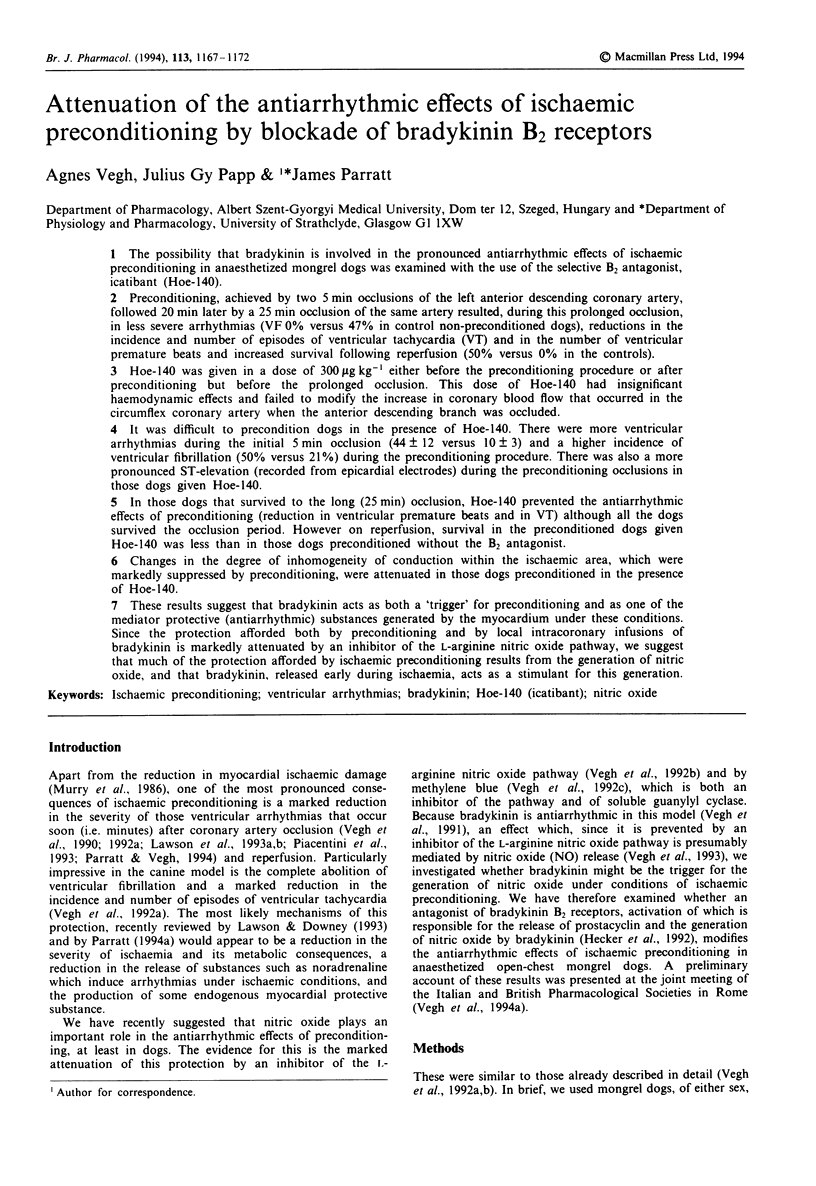
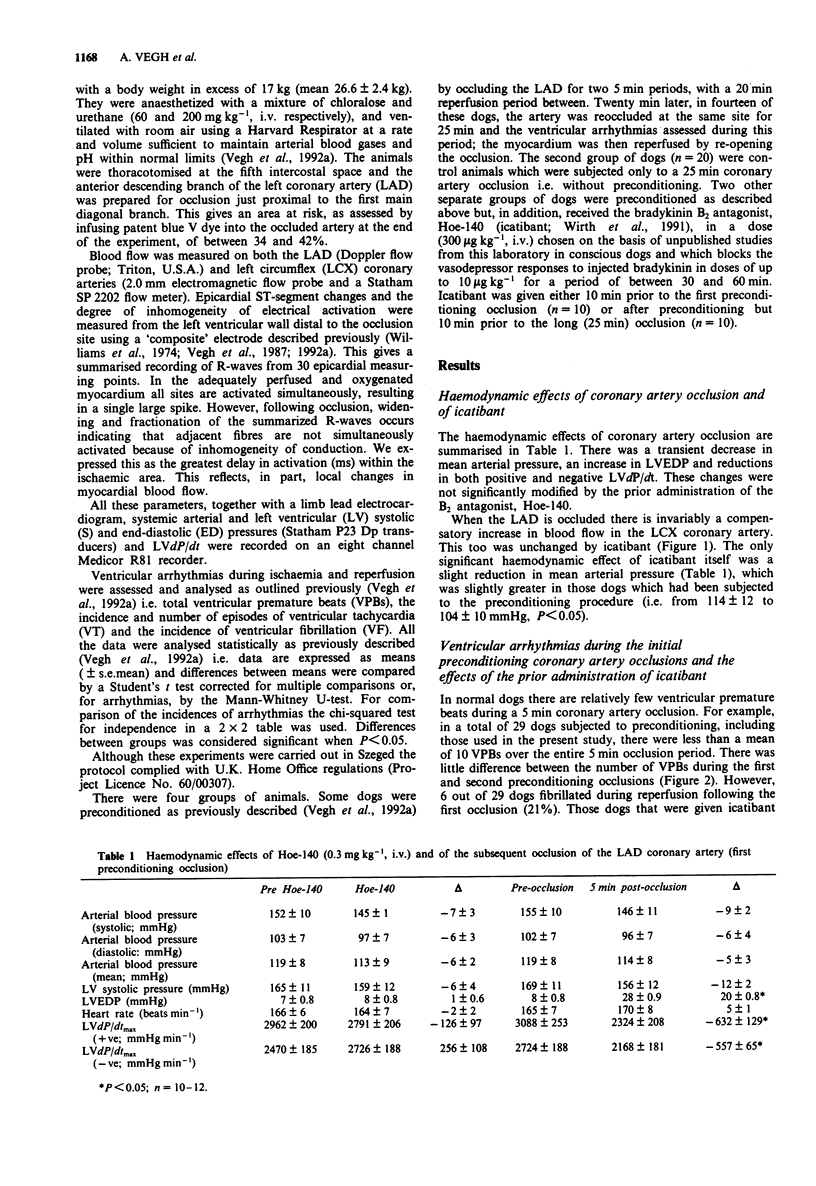
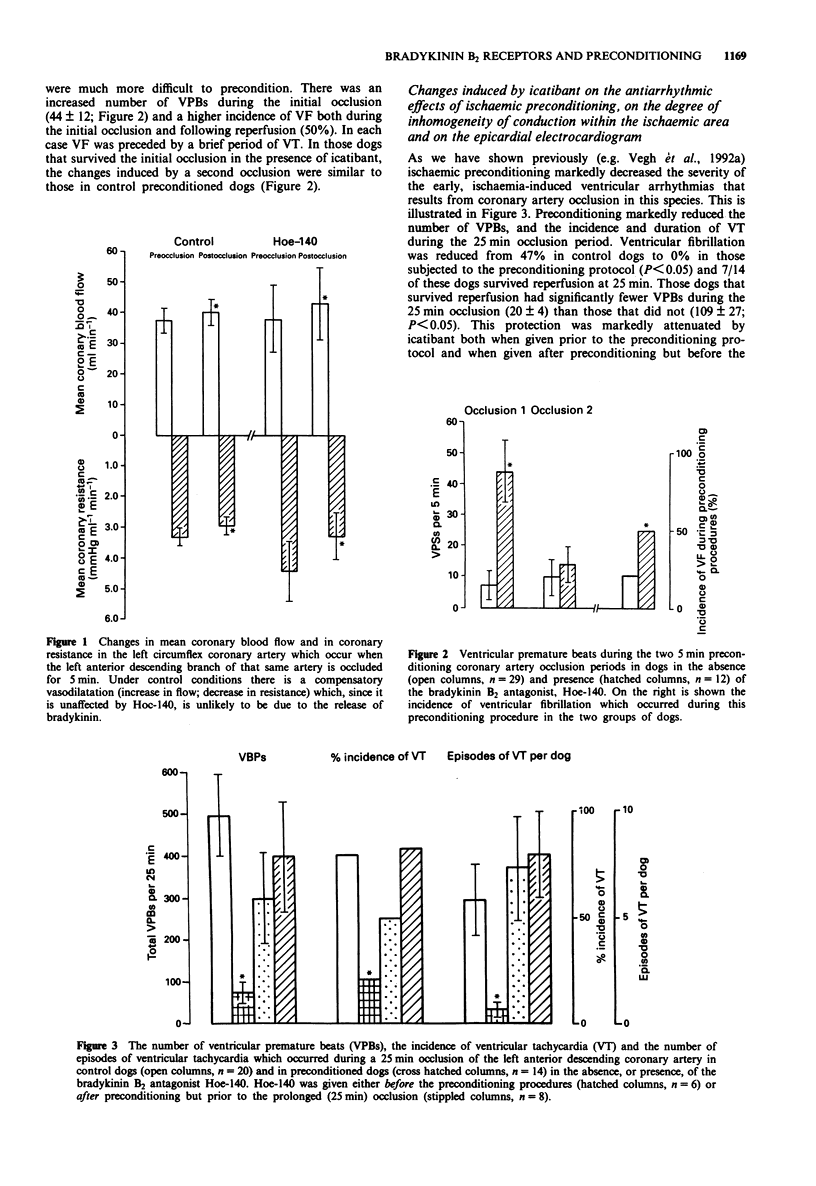
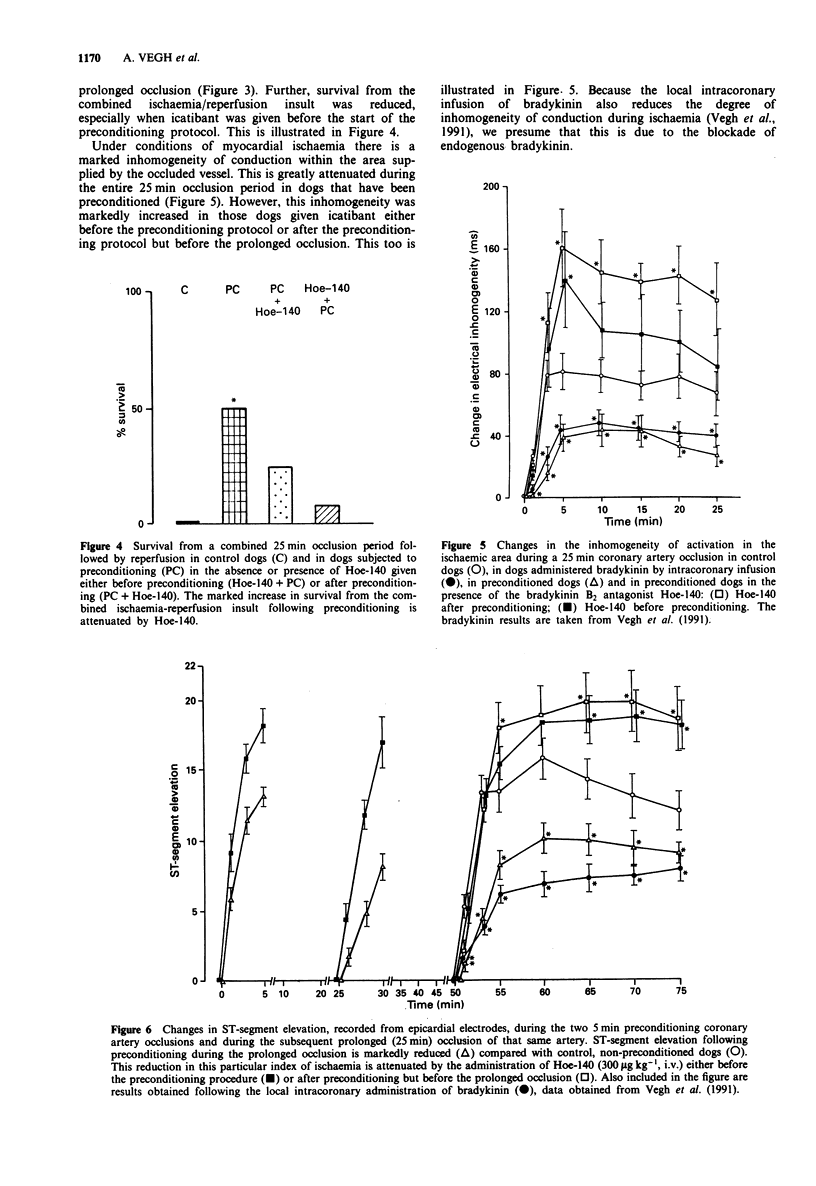
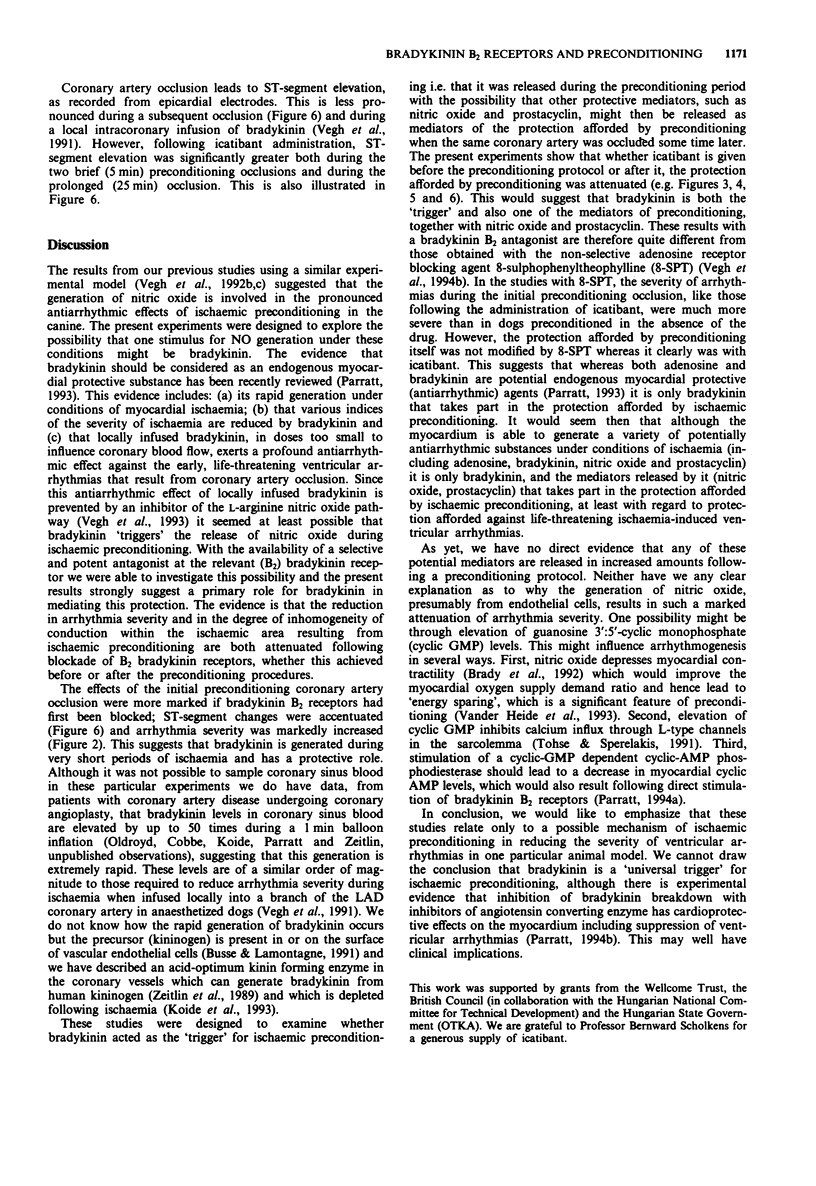
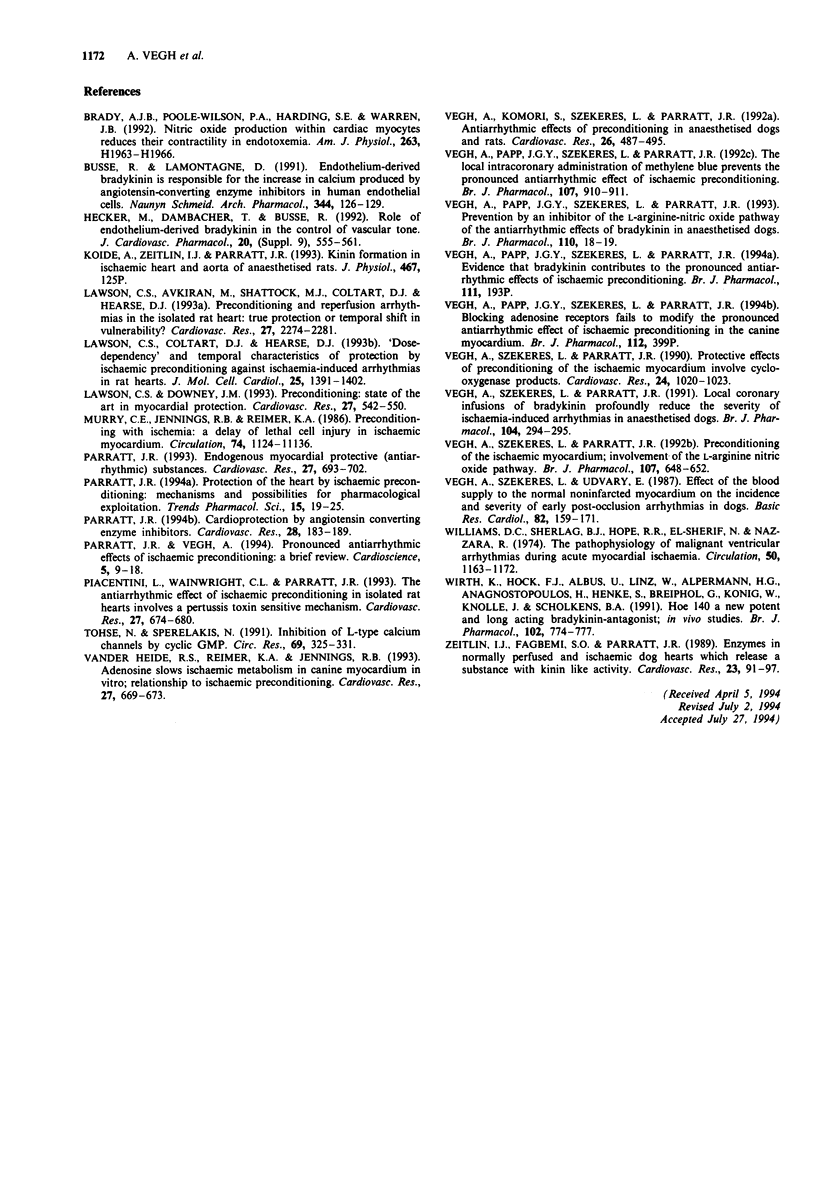
Selected References
These references are in PubMed. This may not be the complete list of references from this article.
- Brady A. J., Poole-Wilson P. A., Harding S. E., Warren J. B. Nitric oxide production within cardiac myocytes reduces their contractility in endotoxemia. Am J Physiol. 1992 Dec;263(6 Pt 2):H1963–H1966. doi: 10.1152/ajpheart.1992.263.6.H1963. [DOI] [PubMed] [Google Scholar]
- Busse R., Lamontagne D. Endothelium-derived bradykinin is responsible for the increase in calcium produced by angiotensin-converting enzyme inhibitors in human endothelial cells. Naunyn Schmiedebergs Arch Pharmacol. 1991 Jul;344(1):126–129. doi: 10.1007/BF00167392. [DOI] [PubMed] [Google Scholar]
- Lawson C. S., Avkiran M., Shattock M. J., Coltart D. J., Hearse D. J. Preconditioning and reperfusion arrhythmias in the isolated rat heart: true protection or temporal shift in vulnerability? Cardiovasc Res. 1993 Dec;27(12):2274–2281. doi: 10.1093/cvr/27.12.2274. [DOI] [PubMed] [Google Scholar]
- Lawson C. S., Coltart D. J., Hearse D. J. "Dose"-dependency and temporal characteristics of protection by ischaemic preconditioning against ischaemia-induced arrhythmias in rat hearts. J Mol Cell Cardiol. 1993 Dec;25(12):1391–1402. doi: 10.1006/jmcc.1993.1156. [DOI] [PubMed] [Google Scholar]
- Lawson C. S., Downey J. M. Preconditioning: state of the art myocardial protection. Cardiovasc Res. 1993 Apr;27(4):542–550. doi: 10.1093/cvr/27.4.542. [DOI] [PubMed] [Google Scholar]
- Murry C. E., Jennings R. B., Reimer K. A. Preconditioning with ischemia: a delay of lethal cell injury in ischemic myocardium. Circulation. 1986 Nov;74(5):1124–1136. doi: 10.1161/01.cir.74.5.1124. [DOI] [PubMed] [Google Scholar]
- Parratt J. R. Cardioprotection by angiotensin converting enzyme inhibitors--the experimental evidence. Cardiovasc Res. 1994 Feb;28(2):183–189. doi: 10.1093/cvr/28.2.183. [DOI] [PubMed] [Google Scholar]
- Parratt J. R. Protection of the heart by ischaemic preconditioning: mechanisms and possibilities for pharmacological exploitation. Trends Pharmacol Sci. 1994 Jan;15(1):19–25. doi: 10.1016/0165-6147(94)90129-5. [DOI] [PubMed] [Google Scholar]
- Parratt J. Endogenous myocardial protective (antiarrhythmic) substances. Cardiovasc Res. 1993 May;27(5):693–702. doi: 10.1093/cvr/27.5.693. [DOI] [PubMed] [Google Scholar]
- Parratt J., Vegh A. Pronounced antiarrhythmic effects of ischemic preconditioning. Cardioscience. 1994 Mar;5(1):9–18. [PubMed] [Google Scholar]
- Piacentini L., Wainwright C. L., Parratt J. R. The antiarrhythmic effect of ischaemic preconditioning in isolated rat heart involves a pertussis toxin sensitive mechanism. Cardiovasc Res. 1993 Apr;27(4):674–680. doi: 10.1093/cvr/27.4.674. [DOI] [PubMed] [Google Scholar]
- Tohse N., Sperelakis N. cGMP inhibits the activity of single calcium channels in embryonic chick heart cells. Circ Res. 1991 Aug;69(2):325–331. doi: 10.1161/01.res.69.2.325. [DOI] [PubMed] [Google Scholar]
- Vander Heide R. S., Reimer K. A., Jennings R. B. Adenosine slows ischaemic metabolism in canine myocardium in vitro: relationship to ischaemic preconditioning. Cardiovasc Res. 1993 Apr;27(4):669–673. doi: 10.1093/cvr/27.4.669. [DOI] [PubMed] [Google Scholar]
- Vegh A., Komori S., Szekeres L., Parratt J. R. Antiarrhythmic effects of preconditioning in anaesthetised dogs and rats. Cardiovasc Res. 1992 May;26(5):487–495. doi: 10.1093/cvr/26.5.487. [DOI] [PubMed] [Google Scholar]
- Vegh A., Papp J. G., Szekeres L., Parratt J. R. Prevention by an inhibitor of the L-arginine-nitric oxide pathway of the antiarrhythmic effects of bradykinin in anaesthetized dogs. Br J Pharmacol. 1993 Sep;110(1):18–19. doi: 10.1111/j.1476-5381.1993.tb13764.x. [DOI] [PMC free article] [PubMed] [Google Scholar]
- Vegh A., Papp J. G., Szekeres L., Parratt J. The local intracoronary administration of methylene blue prevents the pronounced antiarrhythmic effect of ischaemic preconditioning. Br J Pharmacol. 1992 Dec;107(4):910–911. doi: 10.1111/j.1476-5381.1992.tb13384.x. [DOI] [PMC free article] [PubMed] [Google Scholar]
- Vegh A., Szekeres L., Parratt J. R. Local intracoronary infusions of bradykinin profoundly reduce the severity of ischaemia-induced arrhythmias in anaesthetized dogs. Br J Pharmacol. 1991 Oct;104(2):294–295. doi: 10.1111/j.1476-5381.1991.tb12424.x. [DOI] [PMC free article] [PubMed] [Google Scholar]
- Vegh A., Szekeres L., Parratt J. R. Protective effects of preconditioning of the ischaemic myocardium involve cyclo-oxygenase products. Cardiovasc Res. 1990 Dec;24(12):1020–1023. doi: 10.1093/cvr/24.12.1020. [DOI] [PubMed] [Google Scholar]
- Vegh A., Szekeres L., Parratt J. Preconditioning of the ischaemic myocardium; involvement of the L-arginine nitric oxide pathway. Br J Pharmacol. 1992 Nov;107(3):648–652. doi: 10.1111/j.1476-5381.1992.tb14501.x. [DOI] [PMC free article] [PubMed] [Google Scholar]
- Végh A., Szekeres L., Udvary E. Effect of the blood supply to the normal noninfarcted myocardium on the incidence and severity of early post-occlusion arrhythmias in dogs. Basic Res Cardiol. 1987 Mar-Apr;82(2):159–171. doi: 10.1007/BF01907063. [DOI] [PubMed] [Google Scholar]
- Williams D. O., Scherlag B. J., Hope R. R., el-Sherif N., Lazzara R. The pathophysiology of malignant ventricular arrhythmias during acute myocardial ischemia. Circulation. 1974 Dec;50(6):1163–1172. doi: 10.1161/01.cir.50.6.1163. [DOI] [PubMed] [Google Scholar]
- Wirth K., Hock F. J., Albus U., Linz W., Alpermann H. G., Anagnostopoulos H., Henk S., Breipohl G., König W., Knolle J. Hoe 140 a new potent and long acting bradykinin-antagonist: in vivo studies. Br J Pharmacol. 1991 Mar;102(3):774–777. doi: 10.1111/j.1476-5381.1991.tb12249.x. [DOI] [PMC free article] [PubMed] [Google Scholar]
- Zeitlin I. J., Fagbemi S. O., Parratt J. R. Enzymes in normally perfused and ischaemic dog hearts which release a substance with kinin like activity. Cardiovasc Res. 1989 Feb;23(2):91–97. doi: 10.1093/cvr/23.2.91. [DOI] [PubMed] [Google Scholar]


